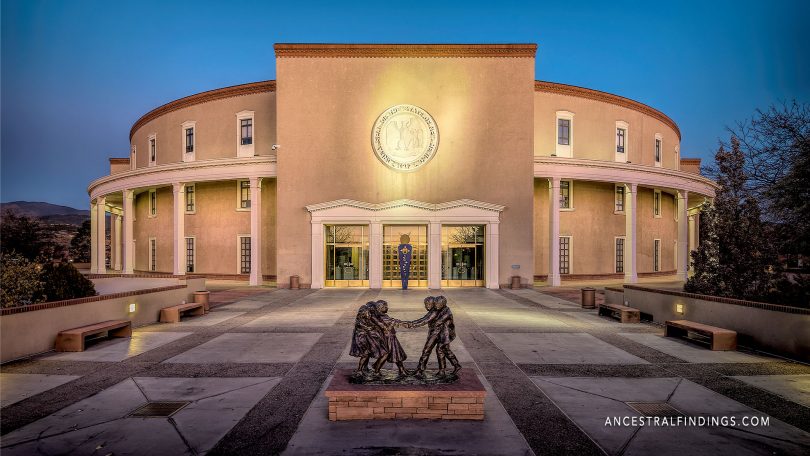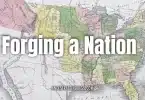Santa Fe is the capital of the state of New Mexico. With a population of around 84,000, it is the fourth most populous city in New Mexico. It is also the county seat of Santa Fe County, and is part of the Albuquerque-Santa Fe-Las Vegas combined statistical area. There are a little more than $1.1 million people in this area. Santa Fe is the oldest state capital in the United States, being founded in 1610, when it replaced Espanola as the capital of the Spanish Nuevo Mexico settlement.
The city of Santa Fe is considered to be one of the greatest art cities in the world. This is because of its abundance of art galleries and installations. It is recognized as a great art city by the UNESCO Creative Cities Network. Some of the artistic highlights in Santa Fe include the Fiesta de Santa Fe, the Palace of the Governors, and the Santa Fe Plaza. The Georgia O’Keefe Museum is located there, as well as a gallery created by cartoonist Chuck Jones.
The people who inhabited the Santa Fe area were a variety of Native American tribes. They lived there for thousands of years, at least, before the Europeans came to the area. One of the earliest known tribes to live in the area was the Tewa, who referred to the area as Ogha Po’oge, which means White Shell Water Place. In Spanish, the name Santa Fe means “holy faith.” The city’s full, official name was, and is still, La Villa Real de la Santa Fe de San Francisco de Asis (meaning “The Royal Town of the Holy Faith of Saint Francis of Assisi”).
The Tewa people occupied the Santa Fe area between about 900 and sometime in the 1500s A.D. The Navajo people came later, but occupied the area with some overlap with the Tewa tribe. The Navajo people called the area Yooto, which means “Bead Water Place.” The Spanish explorer Juan de Onate established the area in 1610, naming it Sant Fe de Nuevo Mexico, as a province of Spain. Other Spanish people came and settled in the area. When a large population of Spanish settlers was reached, the colonial governor, Pedro de Paralta, renamed the area to its current, rather long official name. Because the official name is a long one, people soon started referring to the city as simply Santa Fe, which they still do today.
The early Native people liked the area because of its proximity to the Santa Fe River, which offered plentiful opportunities for fishing and traveling by boat or canoe. This helped them to easily trade with other nearby tribes. The Santa Fe River was a river that had a year-round flow for most of its existence. It gradually became a seasonal river between the 1700s and today. In 2007, the Santa Fe River was named as the most endangered river in the United States.
While Juan de Onate established the city, he was also the leader of the first effort by Europeans to colonize the area. This expedition was in 1598. Onate and his son ruled the area in its early days, but Onate was eventually banished by the Spanish monarchy from the city he founded, because of reports of his cruelty toward the Native tribes in the area.
There was a lack of representation of the local Native tribes in the early government of New Mexico, which caused the later Pueblo Revolt. This was when a group of different Native American tribes in the area (which were all Pueblo people) drove the Spaniards out of New Mexico entirely, and into El Paso. The Pueblo Natives continued to manage the government in New Mexico, situating themselves in the Palace of the Governors in Santa Fe. They were in charge of the New Mexico government from 1680 to 1692.
The Spanish re-conquered the area in 1692 with a war called the Bloodless Reconquest. This was led by Don Diego de Vargas. The Bloodless Conquest was criticized by other as being unnecessarily violent, even for the times, despite the name. The next governor after Vargas, who was Francisco Cuervo y Valdez, brokered peace with the Natives. The peace brokerage included concessions such as the founding of Albuquerque, and better government representation and trade access for the Natives.
Santa Fe was caught up in the Mexican War of Independence in 1810. The area was considered important to fur traders, so the war disrupted the trade. Santa Fe and the rest of New Mexico became part of Mexico in the Mexican War of Independence, but Mexico was still part of Spain at the time. Mexico achieved independence from Spain in 1824, and Santa Fe and the rest of New Mexico along with it.
The Republic of Texas seceded from Mexico in 1836, and when it did so, it tried to claim Santa Fe, as well as other parts of New Mexico, as part of its western territory along the Rio Grande. A military and trading party from Austin, Texas in 1841, with the intent to take control of the Santa Fe Trail. This expedition was known as the Texan Santa Fe Expedition, and it was not very well prepared to take Santa Fe from Mexico. In fact, the expedition was easily captured by the Mexican military.
The United States declared war on Mexico in 1846. A contingent of about 1,700 soldiers were sent to Santa Fe to take it, as well as the rest of the New Mexico Territory, to annex it to the United States. It took until 1848, but the United States was successful in its quest, and annexed New Mexico, with Santa Fe along with it, to the country. The annexation of New Mexico was made official with the Treaty of Guadalupe Hidalgo.
The United States kept New Mexico as a territory for quite a while after annexing it. In fact, they kept it for the rest of the 1800s. It wasn’t until 1912 that the United States granted statehood to New Mexico, as the nation’s 47th state. Santa Fe was kept as its capital.







